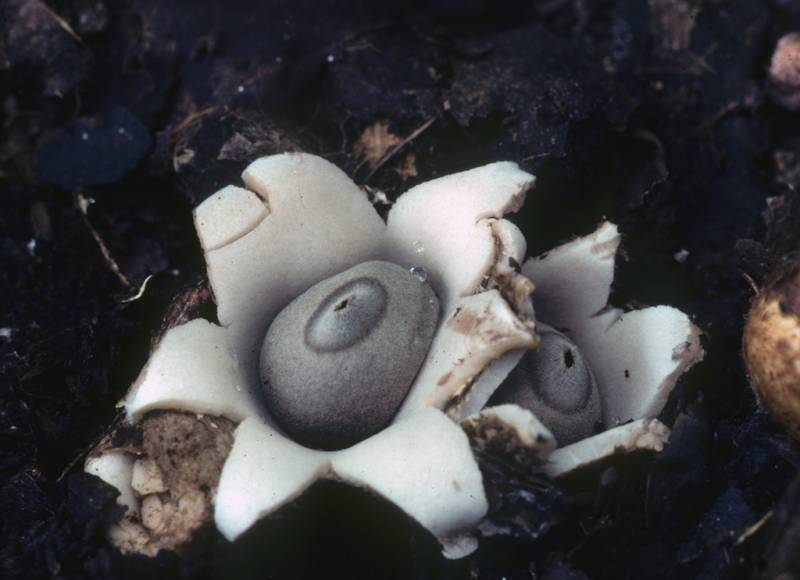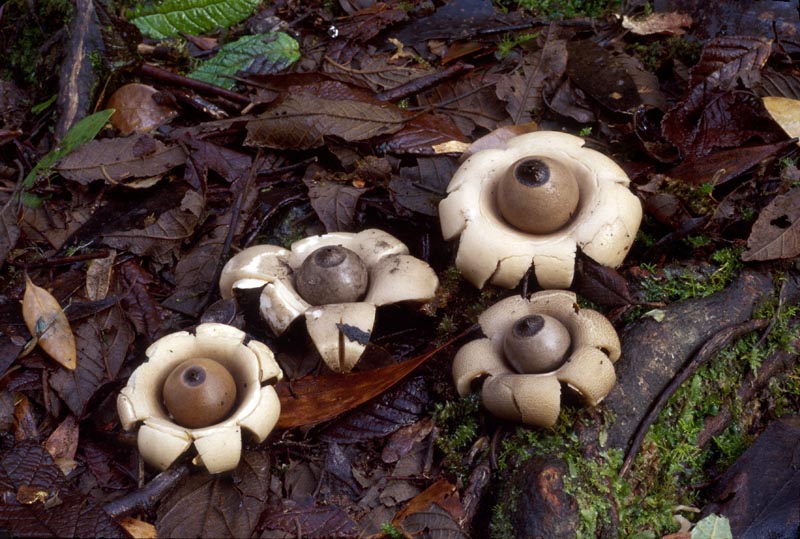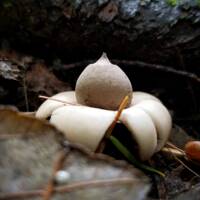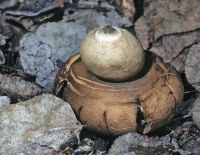Distribution: Earthstars are not particularly abundant in forested areas of the PNW. Many species are more characteristic of drier woodlands and even deserts, so the diversity of earthstars and many other gasteromycetes is much higher in the southwestern U.S. G. saccatum is widely distributed in the Northern Hemisphere and we have seen it, or a dead-ringer for it, in Tasmania, Australia.
Conservation Status: Not of concern
Its spore case sits directly on the usually 5- to 8-rayed base formed by the thick outer peridium, unlike many species in which the spore case is elevated on a short stipe. The pore through which the spores are released has a radially fibrillose margin and is demarcated from the rest of the spore case by a ring that usually is lighter in color than the surrounding tissue.
PNW Herbaria: Specimen records of Geastrum saccatum in the Consortium of Pacific Northwest Herbaria database
CalPhotos: Geastrum saccatum photos







